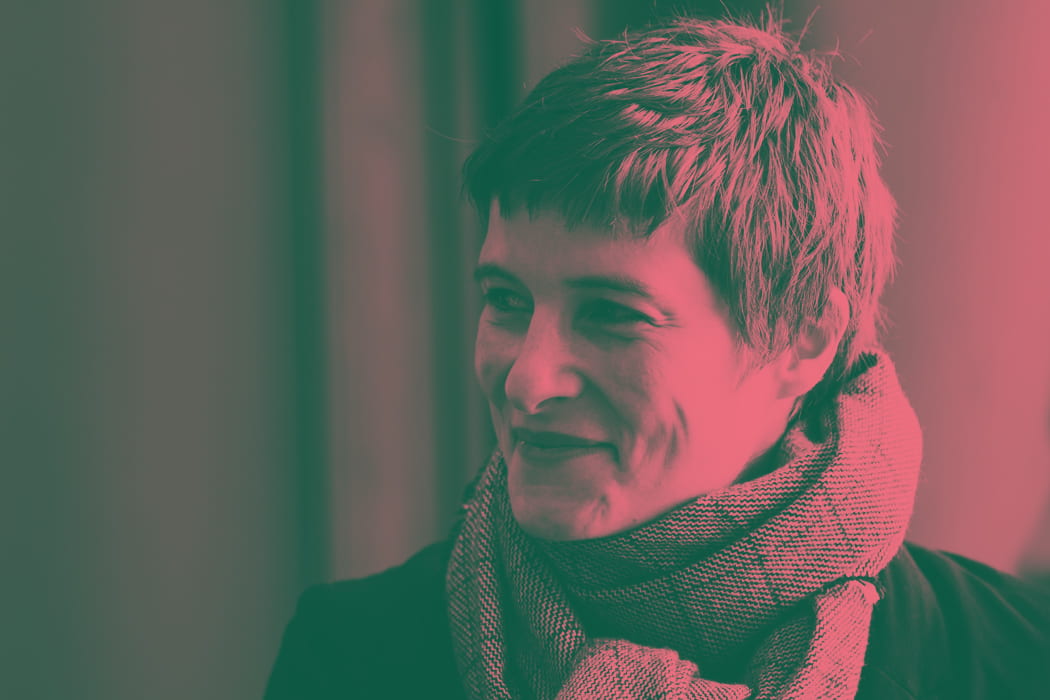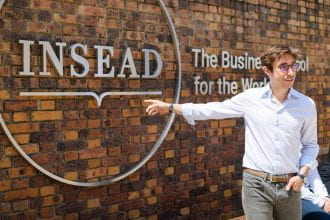

Nida Januskis, Associate Dean of Advancement, describes the institutional strategy that is bolstering gender balance at INSEAD.
For Nida Januskis, promoting gender diversity at INSEAD is a passion project that began in 2016, when she joined the school as Executive Director of Development and became a member of the iW50 Steering Committee. Named Associate Dean of Advancement in 2017, Nida currently leads development fundraising and alumni outreach efforts for INSEAD. She also sits on the board of Women in Leadership, a platform for professional women working in Europe.
In this interview, Nida shares how INSEAD is striving to serve as a model for gender diversity in business education, address factors that contribute to gender imbalance in business and society, and build a stronger pipeline for the next generation of women business leaders.
Q. Why should organisations pay attention to gender diversity?
We know that diversity—and, more specifically, gender diversity—is good for business. At INSEAD, we have gathered a great deal of research and evidence that indicates how gender diversity improves both business outcomes and societal norms. We also know that increasing gender parity helps the bottom line and improves decision-making. It follows the most basic logical reasoning: If business serves societies that are gender diverse, then gender diversity in business will make a stronger match and promote higher levels of success across the board.
“For us at INSEAD, diversity is core to our values. We are the “Business School for the World,” and gender diversity is an important component of these values.”
Q. What inspired you to help spearhead the creation of iW50?
Every day, I see talented women all around me at INSEAD—students, alumnae, faculty and staff. I want INSEAD to celebrate the past, present and future contributions of these fabulous women. I also believe that to achieve gender balance, we need strong role models, and we need to showcase them. However, while it is important to promote gender equity in business education, it is even more important to simply normalise female accomplishments and their leadership. Women are already major contributors to business and business education, but in establishing iW50, INSEAD is seizing an opportunity to both celebrate those successes and bring them into mainstream recognition for the future.
Q. What is INSEAD doing well with regards to gender balance? What can we do better?
There’s a lot that we’re doing very well right now. Professor Zoe Kinias is growing the INSEAD Gender Initiative, in which faculty engage in interdisciplinary research about gender issues; for example, there is a team of psychologists, sociologists and economists studying the importance of role models for women, and we are also looking at how gender equity, or the lack thereof, influences different kinds of outcomes across sectors. On the Executive Education side, we recently created the Women Leaders Programme, which is a short programme for senior leaders run by Professor Jennifer Petriglieri, and the demand for the course is off the charts. In addition, among leading business schools, INSEAD is currently third in the number of women we graduate. However, we still have more work to do.
We need to be leaders in preparing and educating women to take on senior leadership positions, and perhaps even more importantly, we need to help clear paths for women to seize those opportunities. In addition, we need to acknowledge that many women in senior positions feel isolated, and therefore, we need to give them a peer network upon which to rely for professional development and interpersonal growth. There is strength in numbers and these networks can be a very powerful force for good. If you look at the leadership of the CAC 40—the public top-40 companies in France—there is only one CEO who is a woman.
“There is a disconnect between the number of women in our population and the number of women in leadership roles, and it is our responsibility to help change that statistic.”
Q. Why is it important for INSEAD to engage men in this effort?
Engaging men as our champions is incredibly important. Men need to be part of the conversation, because this is not solely a women’s issue; it is a societal issue and a business issue. We’re making sure that our case studies and teaching materials showcase female protagonists in leadership roles, and we are working on student behaviour management in the classroom. For example, there is a common phenomenon of men interrupting women, and we are encouraging our professors to call men out on this behaviour when they see it happen.
Q. Fifty years from now, where do you hope INSEAD will stand in terms of gender balance?
Women have experienced gender bias for thousands of years, and it is obviously very difficult to change those biases. Yet, I’m incredibly hopeful about the future. INSEAD is contributing to a great deal of change and progress for women—change that, in more recent years, has been increasing exponentially. If you looked at the INSEAD classroom 51 years ago, you wouldn’t have found a single woman; however, 15 years ago, 100 women graduated from the school, and this year, we’re going to graduate 360.
Despite this exciting progress, we cannot rest. We still have a great deal of work to do. We need to enrol more women in MBA programmes, because business education is still the strongest lever to pull in accessing senior leadership positions. INSEAD wants to be at the forefront of this movement. We want to create a new paradigm in which we are no longer talking about gender balance or gender diversity—we have just accepted it as the norm.
“50 years from now, I hope that we are no longer concerned about gender imbalance, because it simply won’t exist.”
Q. What role do scholarships play in promoting gender balance at INSEAD?
Scholarships are key for recruiting top women talent to INSEAD. The average age of our students is 29, which is older than many of our peer schools. The financial challenges that our women applicants face are extremely complex. Then, in addition, we are competing for talent with top-tier business schools, which have much deeper pockets than we do. We need to help make it less of a financial burden for women to be able to come to INSEAD. This year, in particular, there is a huge drive among the staff and our alumni to create more scholarships for women at INSEAD. Again, we are attacking this issue in many ways, but one of the most practical will be in providing more funding. By significantly increasing our scholarship offerings, we hope to better facilitate access to INSEAD for women.
Q. How can INSEAD alumni can help promote gender balance?
Both men and women are encouraged to become iW50 Ambassadors as advocates for our 50th anniversary celebrations and the INSEAD Gender Initiative. There are a lot of ways to get involved: You can become a social media champion. You can come to the iW50 Summit and encourage your classmates or friends to attend with you. You can ask your company to sponsor iW50. You can give back by supporting a scholarship. You can join a local chapter of the INSEAD Women in Business Club through MyINSEAD. It is important that we have both men and women involved in this. Remember, this is not just about what INSEAD can do. It is about what the broader “we” can do.



How can I join a local chapter of the INSEAD Women in Business Club through MyINSEAD. I am from India
Hi Selvi, please get in touch with the global IWIB club and they will advise. Their email address is iwib@insead.edu